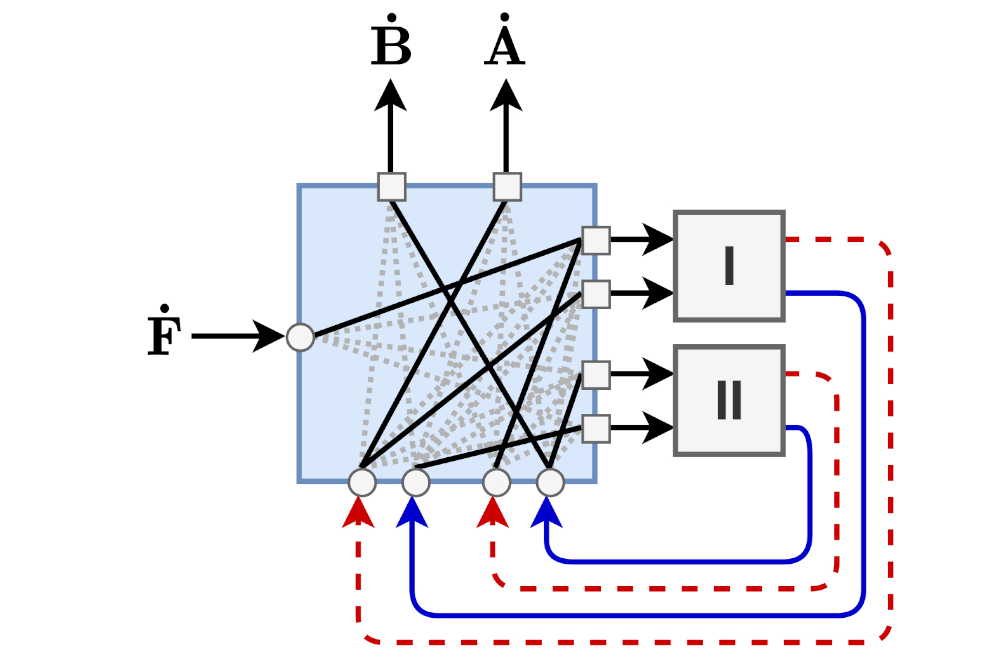
Superstructure instance for separating a binary mixture with two model components
Source: BAM
This study extends an existing approach to computer-aided development of chemical processes by integrating it into a novel mathematical framework. The concept combines optimization methods with a modeling approach based on fundamental physico-chemical phenomena. The objective is to identify process configurations that are both technically feasible and economically and energetically efficient from a vast array of possible alternatives.
A key component of the developed methodology is a multilayered Mixed-Integer Nonlinear Programming (MINLP) framework, which supports decision-making at different levels of modeling and optimization. To ensure consistency within this complex computational structure, a standardized data model was developed in Mathematical Markup Language (MathML) and Extensible Markup Language (XML). This facilitates the seamless exchange and error-free processing of model and simulation data across various software components.
The newly developed approach pursues two central objectives: First, it ensures high physical accuracy by incorporating thermodynamically sound models. Second, a flexible mathematical structure allows for the exploration of a wide range of potential process alternatives. Such a modeling approach enables an extensive search space for process configurations. However, the large number of variables and constraints poses a significant computational challenge. To address this, a structural pre-screening mechanism has been implemented. This mechanism eliminates infeasible process alternatives early on using logical rules and graph-theoretical analyses, without requiring the full solution of the complete optimization model.
The effectiveness of the developed approach is demonstrated through two challenging case studies. The first examines the separation of a benzene-toluene mixture, while the second focuses on the separation of a mixture containing n-pentane, n-hexane, and n-heptane. For both processes, mathematical superstructures with two and four phenomena-based models, respectively, were formulated. The results confirm that the proposed optimization approach can identify both physically consistent and efficient process designs. In particular, the structured screening significantly reduces computational effort by eliminating infeasible alternatives at an early stage.
Overall, this methodology contributes to further automating and improving the computer-aided development of chemical processes. It represents a promising approach for future applications in chemical process engineering, especially in areas where innovative and energy-efficient separation processes are required.
Optimization-based process synthesis by phenomena-based building blocks and an MINLP framework featuring structural screening
David Krone, Erik Esche, Mirko Skiborowski, Jens-Uwe Repke
Computers & Chemical Engineering, Volume 194, March 2025


